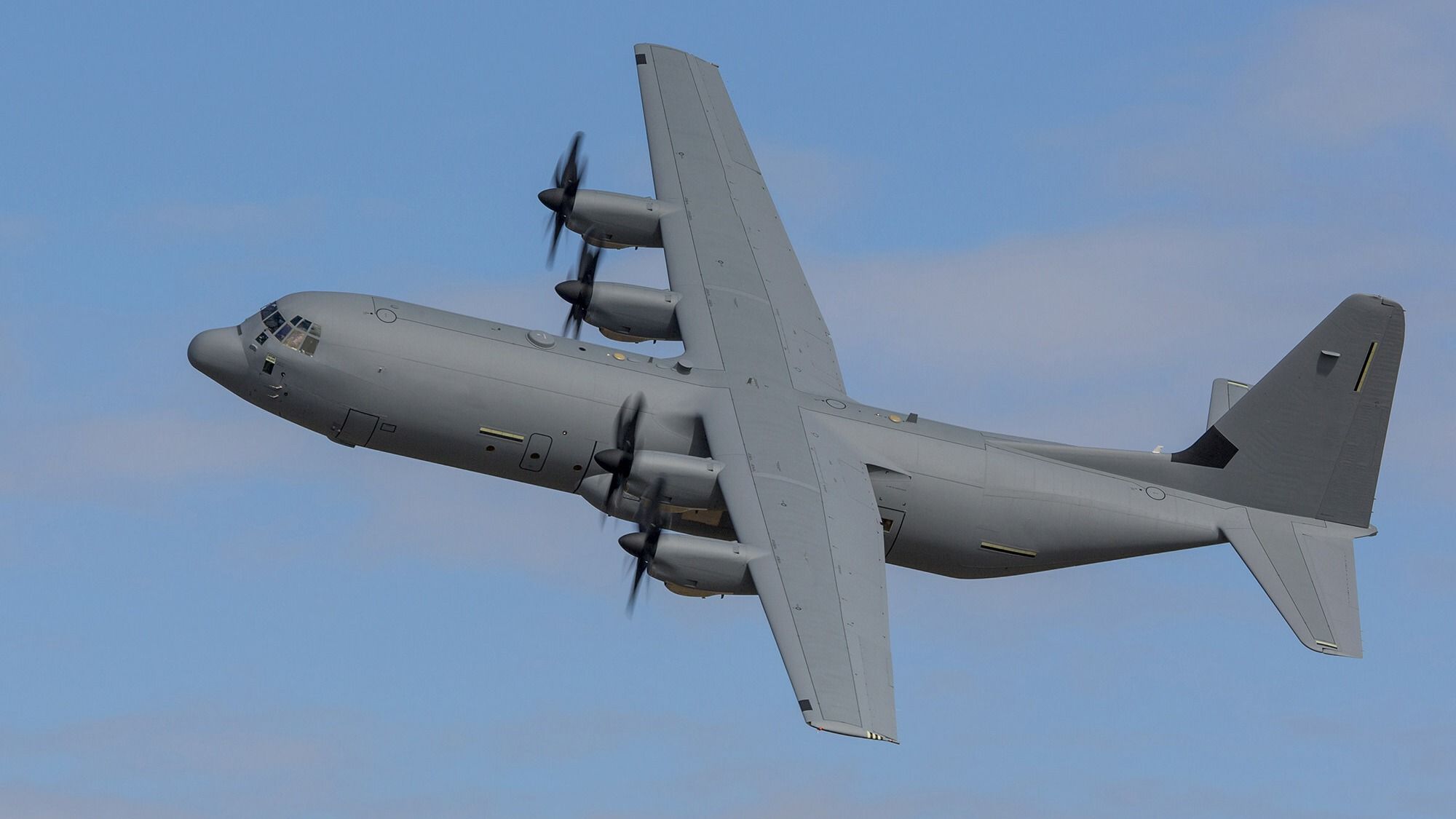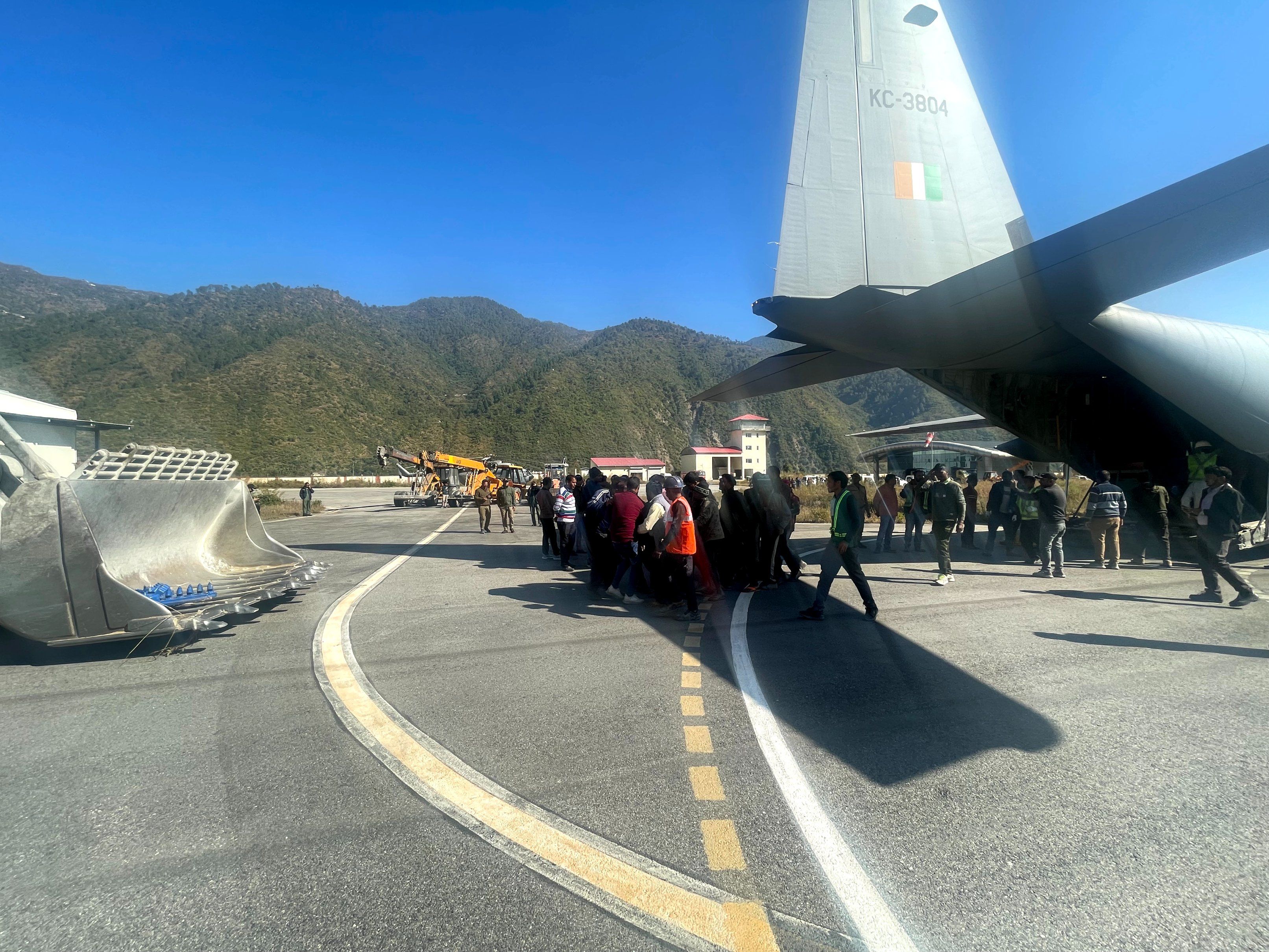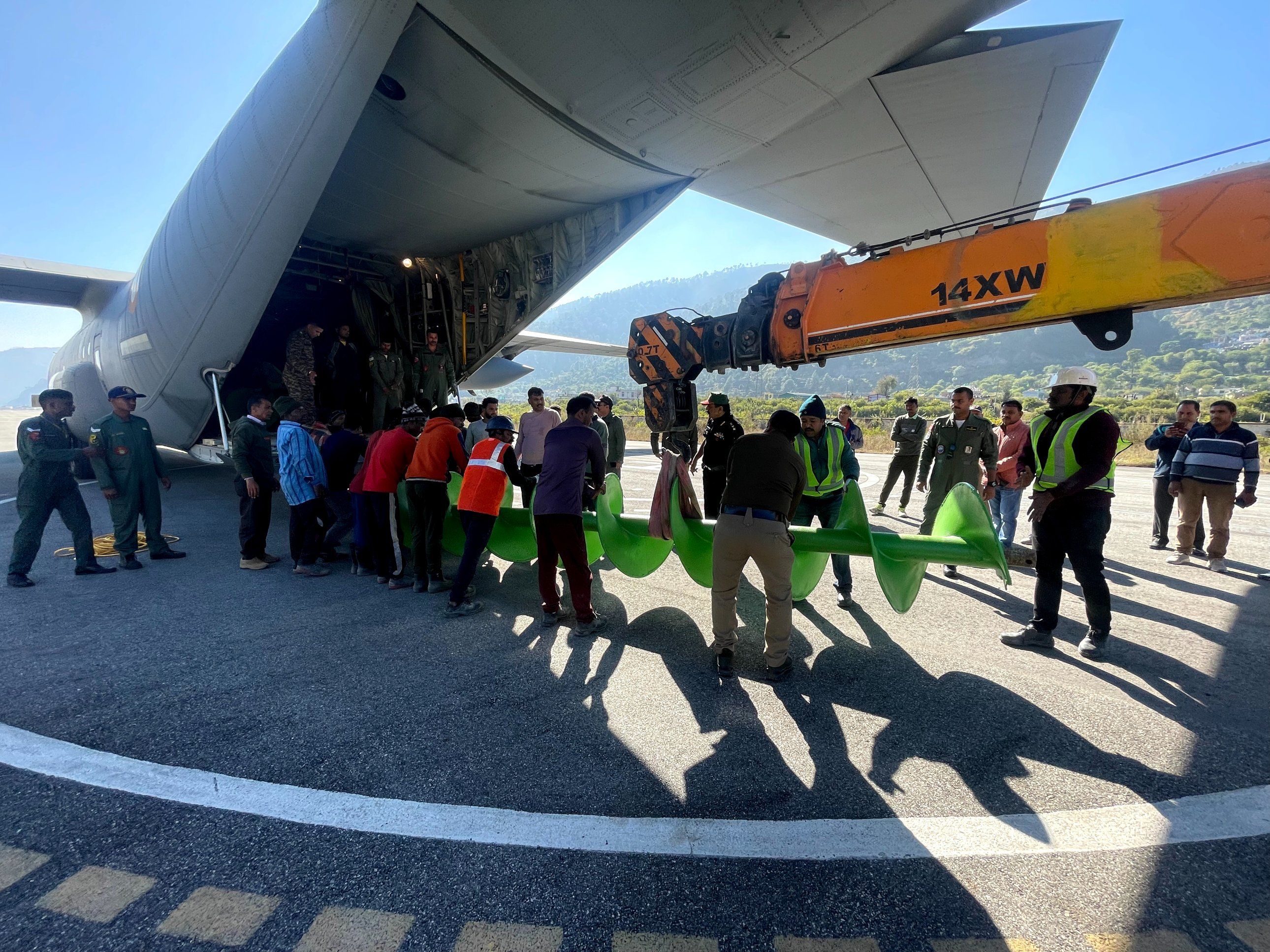Summary
- The Indian Air Force successfully used two C-130J Super Hercules aircraft to transport critical equipment to rescue trapped workers in a collapsed tunnel.
- The mission faced challenges including poor visibility, a short landing strip, and limited space for offloading the rescue equipment.
- Despite these challenges, the mission was completed within a few hours, and a heavy drilling machine was taken to the site to expedite the rescue operation.
The Indian Air Force (IAF) used two Lockheed Martin C-130J Super Hercules military aircraft to transport “critical equipment” to expedite rescue operations for 40 workers who have been trapped under a collapsed tunnel for over five days. The planes reportedly landed on a gravel airstrip in the mountains of Uttarakhand.
Since the advanced landing ground (ALG) in Dharasu is short, the mission was complex. Additionally, crews reportedly faced poor visibility and constricted space to offload the rescue equipment once on the ground.
A risky operation
According to NDTV, the risky operation had no room for error despite challenges, including the heavy landing weight on the aircraft from all the equipment onboard paired with the short ALG. Before the mission was green-lit, the IAF reportedly flew the C-130J pilots in a helicopter over the ALG to assess the runway condition and see if there were any obstructions. The helicopter performed several approaches to allow the crew to decide whether conducting the flight would be suitable for the critical operation.
Around 18 miles from the tunnel rescue location, Dharasu ALG is the nearest landing strip, at 3,600 feet long and 3,000 feet above sea level, according to NDTV. During earlier trials for the mission’s feasibility, officials reportedly determined that the airstrip was unfit for the C-130Js.
A successful mission
The military aircraft reportedly flew to Agra and Palam to be loaded with the rescue equipment. The Asian reported that a heavy drilling machine was airlifted by the planes to replace the original equipment that had “failed.” Drilling on the escape passage to rescue the workers reportedly began last Tuesday and was stopped on Wednesday morning.
Photo: Indian Air Force
The IAF shared on social media Wednesday afternoon that the mission was completed, bringing nearly 19 tonnes (38,000 lbs) of rescue equipment to Dharasu ALG.
“Drilling equipment was urgently needed to rescue construction workers stuck due to a tunnel collapse on the ongoing project near Dharasu, Uttarakhand. Landing expeditiously today afternoon, the #IAF, utilising its C-130 J aircraft, has now airlifted the drilling equipment weighing almost seven tonnes to Maa Ganga airport near the site. Another aircraft carrying almost twelve tonnes of critical equipment has got airborne from Delhi as well.”
Reduced visibility, paired with the aircraft’s heavyweight, posed extreme challenges as the crews carried out the mission, but according to sources close to the matter, the mission was completed in only a few hours.
“The thorough professionalism of the IAF aircrew flying the C-130Js was evident wherein the whole operation was executed within less than five hours,” a source explained to NDTV.
Assembling the equipment
However, more challengers were encountered once on the ground as there was limited space to offload the cargo. According to NDTV, there was no specialized equipment to assist with getting the rescue equipment off the aircraft. As a result, a mud ramp was reportedly created to help get the cargo off the aircraft to avoid a delay in subsequent rescue operations.
Photo: Indian Air Force
The drilling machine onboard was split into two parts during transit on the military aircraft but was reportedly taken to the Silkayara village site, where the tunnel collapsed, to be assembled, according to The Asian. It can reportedly drill through 13-16 feet per hour, expediting the work of the previous drill, which only sawed through about three feet per hour.



